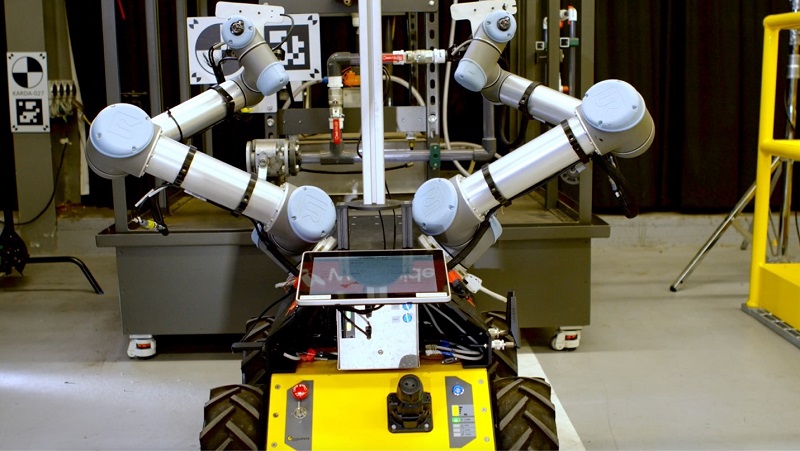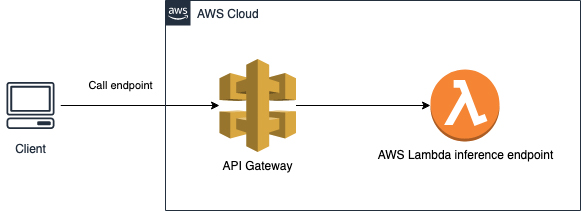AWS Machine Learning Blog
Category: Compute
Build a CI/CD pipeline for deploying custom machine learning models using AWS services
Amazon SageMaker is a fully managed service that provides every developer and data scientist with the ability to build, train, and deploy machine learning (ML) models quickly. SageMaker removes the heavy lifting from each step of the ML process to make it easier to develop high-quality ML artifacts. AWS Serverless Application Model (AWS SAM) is […]
Rust detection using machine learning on AWS
Visual inspection of industrial environments is a common requirement across heavy industries, such as transportation, construction, and shipbuilding, and typically requires qualified experts to perform the inspection. Inspection locations can often be remote or in adverse environments that put humans at risk, such as bridges, skyscrapers, and offshore oil rigs. Many of these industries deal […]
Introducing Amazon SageMaker Reinforcement Learning Components for open-source Kubeflow pipelines
This blog post was co-authored by AWS and Max Kelsen. Max Kelsen is one of Australia’s leading Artificial Intelligence (AI) and Machine Learning (ML) solutions businesses. The company delivers innovation, directly linked to the generation of business value and competitive advantage to customers in Australia and globally, including Fortune 500 companies. Max Kelsen is also […]
Using container images to run TensorFlow models in AWS Lambda
TensorFlow is an open-source machine learning (ML) library widely used to develop neural networks and ML models. Those models are usually trained on multiple GPU instances to speed up training, resulting in expensive training time and model sizes up to a few gigabytes. After they’re trained, these models are deployed in production to produce inferences. […]
Applying voice classification in an Amazon Connect telemedicine contact flow
Given the rising demand for fast and effective COVID-19 detection, customers are exploring the usage of respiratory sound data, like coughing, breathing, and counting, to automatically diagnose COVID-19 based on machine learning (ML) models. University of Cambridge researchers built a COVID-19 sound application and demonstrated that a simple binary ML classifier can classify healthy and […]
Machine learning on distributed Dask using Amazon SageMaker and AWS Fargate
As businesses around the world are embarking on building innovative solutions, we’re seeing a growing trend adopting data science workloads across various industries. Recently, we’ve seen a greater push towards reducing the friction between data engineers and data scientists. Data scientists are now enabled to run their experiments on their local machine and port to […]
Using container images to run PyTorch models in AWS Lambda
July 2024: This post was reviewed for accuracy. PyTorch is an open-source machine learning (ML) library widely used to develop neural networks and ML models. Those models are usually trained on multiple GPU instances to speed up training, resulting in expensive training time and model sizes up to a few gigabytes. After they’re trained, these […]
Model serving in Java with AWS Elastic Beanstalk made easy with Deep Java Library
Deploying your machine learning (ML) models to run on a REST endpoint has never been easier. Using AWS Elastic Beanstalk and Amazon Elastic Compute Cloud (Amazon EC2) to host your endpoint and Deep Java Library (DJL) to load your deep learning models for inference makes the model deployment process extremely easy to set up. Setting […]
Model serving made easier with Deep Java Library and AWS Lambda
Developing and deploying a deep learning model involves many steps: gathering and cleansing data, designing the model, fine-tuning model parameters, evaluating the results, and going through it again until a desirable result is achieved. Then comes the final step: deploying the model. AWS Lambda is one of the most cost effective service that lets you run code without […]
Intelligently connect to customers using machine learning in the COVID-19 pandemic
The pandemic has changed how people interact, how we receive information, and how we get help. It has shifted much of what used to happen in-person to online. Many of our customers are using machine learning (ML) technology to facilitate that transition, from new remote cloud contact centers, to chatbots, to more personalized engagements online. […]








